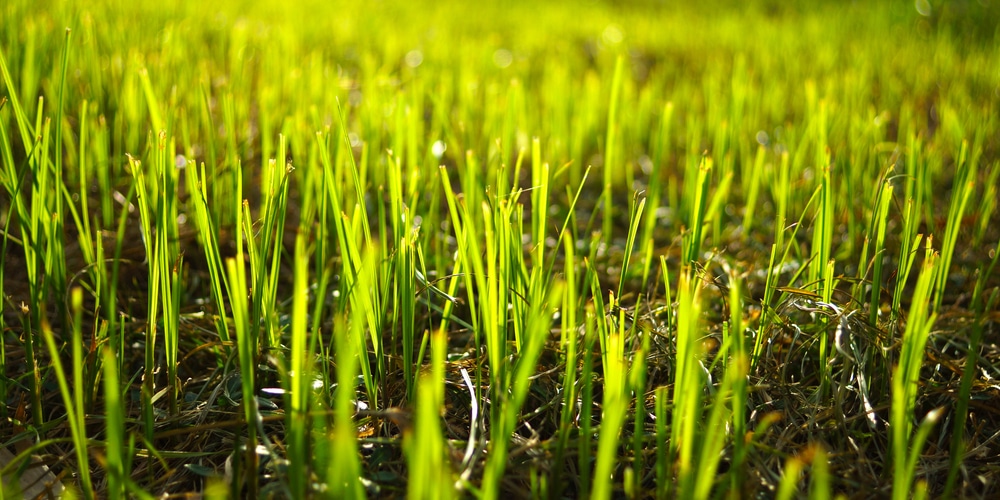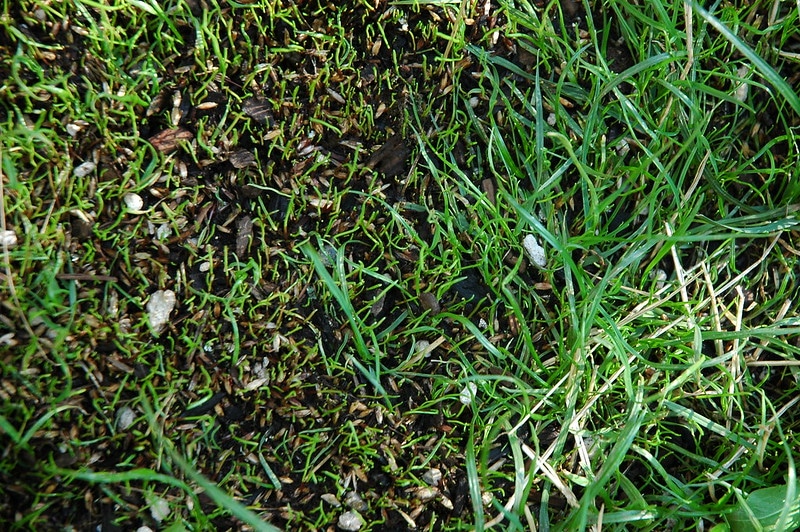You have just installed a new lawn and it looks magnificent, save for one thing. The grass is a light, almost lime green color. You check the seed packet to see if you accidentally grabbed the wrong kind of grass seed, but it appears to be the correct type.
Or maybe you’ve just mowed your lawn and you notice later that the grass is lighter in color as it starts growing back.
Now you’re wondering whether or not it’s normal for new grass to be lighter in color. Good thing, you’re in the right place. Keep reading to get your answer.
Is new grass lighter in color?
For the most part, yes. It is not uncommon for new lawns to be lighter in color, particularly when it is first growing. That’s in consideration that the grass will have low chlorophyll stores as it starts to establish itself.
Chlorophyll is what gives plants their green coloration and is essential for the plant’s survival. It helps the plant absorb sunlight, which in turn produces energy for the plant to grow.
As the grass grows and becomes more established, it will produce more chlorophyll and will appear more green in color.
In the case of new light green grass after mowing, this is due to the tips of the blades being cut off. This is especially true if the grass in question was taller than usual when being cut.
The tips of the blades contain the most chlorophyll, so when they’re cut off, the grass will appear lighter in color until it grows back.
Reasons why your new grass is light green
There are a few reasons that could explain why your new grass is lighter in color.
1. The grass is establishing
As mentioned earlier, one of the most common reasons for new grass in newly-established lawns to be lighter in color is because it’s still establishing itself.
As the grass grows, it should produce more chlorophyll, hence appearing greener.
2. The type of grass
Some types of grass are simply lighter in color than others. If you didn’t do your research before planting your lawn, then it’s possible that you chose a grass type that has a lighter shade of green color.
In such cases, there’s not much you can do about it except to accept it and enjoy your lawn. If, however, your grass is already established and it starts to turn pale green, it could be a sign of unwanted grassy weeds.
3. Nutrient deficiency
Another reason your new grass might be lighter in color is due to nutrient deficiency. Just like humans, plants need certain nutrients and minerals to grow properly.
Nitrogen deficiency is a common problem that can lead to pale or yellowish-green grass. This is because nitrogen is responsible for giving plants their green coloration.
A lack of nitrogen can be caused by several factors, such as
- Incorrect pH
- Natural soil depletion
- Excessive watering of plants
- Problems with the root system of your plants
- An excessive amount of chloride, zinc, potassium, or manganese
Luckily, you can correct nitrogen deficiency by using a nitrogen-rich fertilizer. Just be sure to follow the directions on the package for the best results.
4. Soil problems
There are other times when your grass’s color can be affected by problems with the soil. One example of this is when the soil is too compacted or the pH is lower than it should be.
Grass prefers slightly acidic soil with a pH of around 6.5-7.0 for the best growth. As such, it’s important to test your soil’s pH level to ensure that it’s within the ideal range for grass growth.
If the pH is too low, you can use a material that contains lime to raise it. Conversely, you will want to use products that contain sulfur to lower it.
5. Improper mowing
If you’re mowing your lawn and notice that the grass is light green when it starts to grow back, it could be a sign that you’re mowing it too short. Grass can also take on a pale hue if you use dull blades to mow it.
Be sure to use sharp blades and mow your grass to the recommended height to prevent this from happening.
Is new grass lighter in color?: Final word
In most cases, it is perfectly normal for new grass to be lighter in color. However, if you’re not sure why your grass is pale green, it might be due to one of the other reasons mentioned in this article.
If you’re still unsure, you might want to give your lawn some time to grow and see if the color changes. You can also consult a lawn care professional or soil testing kit to help you determine the cause of your grass’s lighter color.

